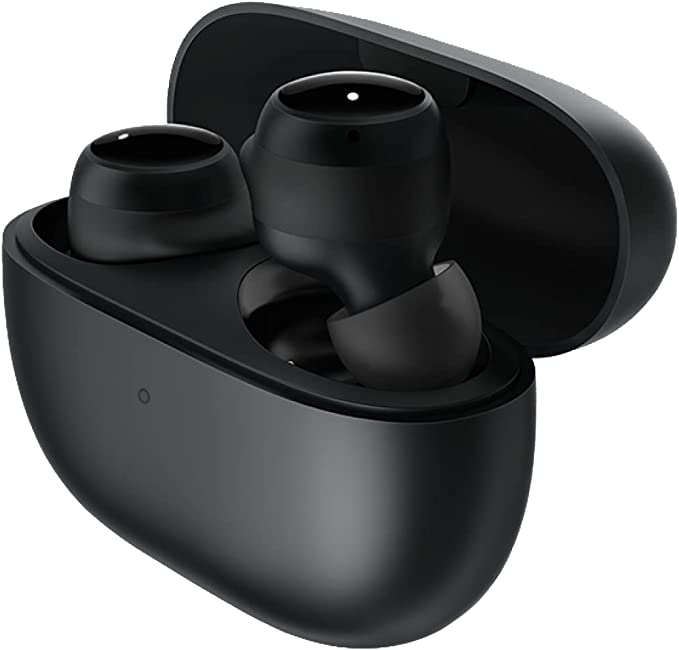Sudio A2 True Wireless Earbuds: Experience Crystal Clear Sound with Active Noise Cancellation
Update on Sept. 22, 2025, 12:45 p.m.
The world is loud. It’s the low hum of the server room, the roar of a jet engine outside a thin airplane window, the cacophony of a city street that seeps through your walls. For centuries, our only defense against this auditory assault was to build thicker walls or plug our ears. We fought noise with mass, with silence. But what if the most effective way to fight noise wasn’t with silence at all? What if, paradoxically, the solution to unwanted sound was… more sound?
This isn’t a riddle. It’s the elegant physical principle at the heart of one of the most sought-after features in modern audio: Active Noise Cancellation (ANC). It’s a technology that feels like magic, but its roots lie in a simple, beautiful concept that predates the digital age by decades. It’s a war fought with waves, and the goal is to achieve a perfect, engineered nothingness.

The Physics of Nothing
To understand how you can add something (sound) to something else (noise) and get nothing (silence), we need to revisit a fundamental idea: sound is a wave. Picture it not as a chaotic force, but as an orderly procession of peaks and troughs, like ripples spreading across a pond. The height of these peaks determines the volume (amplitude), and the distance between them determines the pitch (frequency).
Now, imagine you could create a second set of ripples, a perfect mirror image of the first. This new set would have a trough everywhere the original has a peak, and a peak everywhere the original has a trough. If you overlay these two sets of ripples, the water flattens. The energy is still there, but the opposing forces have cancelled each other out into a state of calm.
This is the principle of destructive interference. It is the foundational physics of silence-making. To cancel a sound wave, you just need to generate its exact opposite—its “anti-noise”—a wave that is perfectly 180 degrees out of phase. When the peak of the noise wave meets the trough of the anti-noise wave, they annihilate each other. The result isn’t just quiet; it’s the physical cancellation of a wave.
An Idea Born Before Its Time
This idea is not a product of the smartphone era. It was first formally conceived in the 1930s, a time of steam and steel, not silicon and software. In 1936, a German physicist named Paul Lueg filed a patent describing a method to cancel noise in ducts or tubes. His concept was brilliant: use a microphone to detect the noise wave, an amplifier to flip its phase, and a speaker to broadcast the newly created anti-noise wave.
Lueg’s idea was revolutionary, but he was a man ahead of his time. The analog electronics of the era were too slow, too bulky, and too imprecise to perform the instantaneous calculations required. The concept was sound, but the technology was science fiction. The patent languished, a testament to a brilliant idea waiting for the world to catch up.
It took nearly half a century for technology to mature. The breakthrough came not from the world of consumer audio, but from aviation. In the late 1970s, Dr. Amar Bose, frustrated by the deafening noise in an airplane cabin that rendered music unlistenable, began developing the first commercially viable noise-cancelling headphones for pilots. The advent of microprocessors and sophisticated algorithms finally gave engineers the tools to realize Lueg’s vision.

The Modern Weapon, Miniaturized
Today, this entire system of wave-cancellation has been astonishingly miniaturized. It now fits into devices small enough to be tucked into our ears, a perfect example being a modern pair of true wireless earbuds like the Sudio A2. These tiny gadgets are sophisticated acoustic weapons.
Here’s how the modern battle is waged inside each earbud:
- Reconnaissance: An outward-facing microphone acts as a scout, capturing ambient noise before it reaches your ear.
- Strategy: A tiny, powerful Digital Signal Processor (DSP) analyzes this incoming noise wave in real-time, calculating its precise inverse—the anti-noise. This is the brain of the operation, performing millions of calculations per second.
- Counter-Attack: The earbud’s internal speaker broadcasts this perfectly out-of-phase anti-noise wave.
- Confirmation: In more advanced “hybrid” systems, a second, inward-facing microphone listens for any residual noise that has slipped past the defenses, allowing the DSP to fine-tune its counter-attack continuously.
When this works, the effect is uncanny. The low, persistent rumble of a train car or an air conditioner simply vanishes, leaving a cleaner canvas upon which your music or podcast can be painted.

The Art of the Almost-Perfect
Yet, as anyone who has used noise-cancelling headphones knows, the silence is never absolute. A nearby conversation might be muffled but still intelligible; a sudden siren will still cut through. This isn’t a failure of the technology, but a window into the world of engineering trade-offs.
Creating perfect anti-noise requires immense processing power and speed, which in turn consumes significant battery life and generates heat. Furthermore, ANC is vastly more effective against predictable, low-frequency sounds than it is against sharp, high-frequency, or erratic ones. A constant hum is easy to predict and cancel; a human voice, with its complex and rapidly changing frequencies, is a much harder target.
For an affordable pair of earbuds, engineers must make difficult choices. How much battery life are consumers willing to sacrifice for a few extra decibels of noise reduction? How much cost can be added for a more powerful processor? The “minimal” noise cancellation some users might perceive in a device like the Sudio A2 isn’t a flaw; it’s a meticulously calculated compromise. It represents a balance point between performance, power consumption, and price, engineered to be “good enough” for the most common use cases, like a daily commute. The perfect is the enemy of the good, and in consumer electronics, the good is what ships.
This philosophy of compromise is the silent, guiding principle behind every piece of technology we own. It’s a constant, elegant dance between the boundless possibilities of physics and the finite constraints of the real world. Realizing this doesn’t diminish the magic of using sound to create silence; it deepens our appreciation for the incredible ingenuity required to bring that magic to life, right inside our ears.



























































